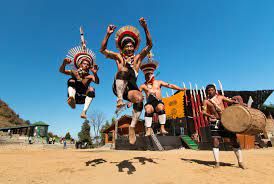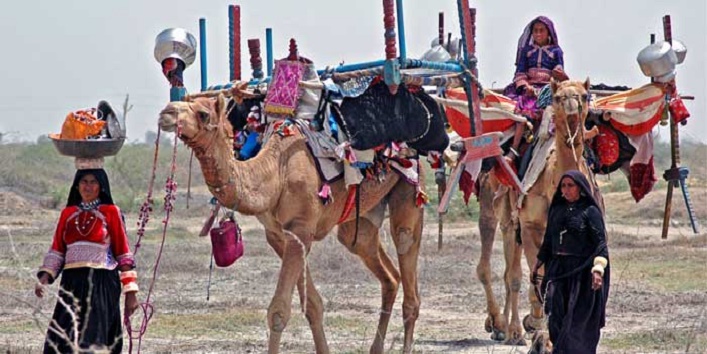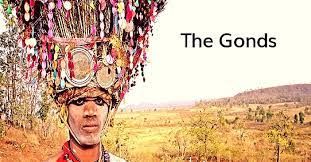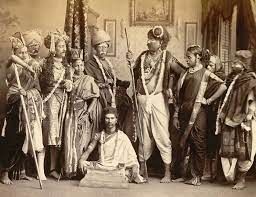Tribal societies
- Books Name
- Social Science Book
- Publication
- Cognizance Publication
- Course
- CBSE Class 7
- Subject
- Social Science
Chapter 6
Tribes, Nomads and Settled Communities
Over the centuries, important political, social and economic developments has taken place.Social change was not the same everywhere because different kinds of societies involved differently.Society was already divided according to the rules of varna. These rules, as prescribed by the Brahmanas, were accepted by the rulers of large kingdoms.The difference between the high and low, and between the rich and poor, increased.

Tribal societies
Tribal area
Many societies in the subcontinent did not follow the social rules and rituals prescribed by the Brahmanas. Nor were they divided into unequal classes. Such societies are called tribes.Tribes were united by kinship bonds. Many tribes obtained their livelihood from agriculture.Some tribeswere nomadic and move from one place to another.A tribal group controlled land pastures jointly, and divided these amongst household according to its own rules.Many tribes usually lived in forests,hills, deserts and place is difficult to reach.The tribes retained their freedom and preserved their separate culture.Caste based and tribal societies also depended on each other for their diverse needs. This relationship, of conflict and dependence gradually caused both societies to change.
People and Indian Tribes
Who were tribal people?
Mostly tribal people did not keep written records.But they preserved rich customs and oral traditions. These were passed down to each new generation. Present day historians have started using such oral traditions to write tribal histories.Some powerful tribes controlled large territories. In Punjab, the Khokhar tribe was very influential during the thirteenth and fourteenth centuries.Later, the Gakkhars became more important.Their chief Kamal Khan Gakkhar was made a mansabdar by Emperor Akbar.In Multan and Sind, the Langhas and Arghuns dominated extensive regions before they were subdued by the Mughals.The Balochis were another large and powerful tribe in the northwest. They were divided into many smaller clans under different chiefs.In the western Himalaya lived the shepherd tribe of Gaddis.North Eastern part of the subcontinent was entirely dominated by the tribes- the Nagas, Ahoms and many other.In many areas of present-dayBihar and Jharkhand, Chero chiefdoms had emerged by the 12th century. Raja Mansingh, Akbar's famous general, attacked and defeated the Cheros in 1591.Under Aurangzeb, Mughal forces captured many Chero fortresses and subjugated the tribe. The Mundas and Santals were among the other tribes important tribes that lived in this region and also in Orissa and Bengal. Koli’s, Berads were another tribe that belonged to Maharashtra highlands in Karnataka.Koli’s also lived in many areas of Gujarat.In South, there were large tribal population of Koragas,Vetars, Maravars and others.
The large tribe of Bhils spread across western and central India. By the late 16th century, many of them had become settled agriculturists and some even Zamindars.The Gonds were found in greater number across the present day states of Chhattisgarh, Madhya Pradesh, Maharashtra and Andra Pradesh.
how they lived
- Books Name
- Social Science Book
- Publication
- Cognizance Publication
- Course
- CBSE Class 7
- Subject
- Social Science
How they lived?
Nomadic pastoralists
Nomadic pastoralists moved over long distances with their animals and lived on milk and other pastoral products, they exchange wool, ghee etc for grain, clothes, utensils and other products.They bought and sold these goods as they moved from one place to another, transporting them on their animals. The Banjara were the most important trader nomads.Their caravan was called tanda.
One tanda consists of many families. Their way of life is similar to that of carriers who continuously travel from place to place. They own their oxen. They are sometimes hired by merchants, bus most commonly they are merchants themselves. They buy grains where it is cheaply available and carry it to places where it is dearer. From there they again reload there oxen with anything that can be profitably sold in other places. In a tanda, there may be as many as 6 or 7 hundred persons. They do not travel more than 6 or 7 miles a day-that too in the cool weather. After unloading their oxen, they turn them free to graze as there is enough land and no one there to forbid them.
Banjaras

Sultan Alauddin Khilji use the Banjaras to transport grain to the city markets, Emperor Jahangir wrote in his memoirs that the Banjaras carried grain on their bullocks from different areas and sold it in towns.They transported food grain for Mughal army during military campaigns.With a large army, there could be1,00,000 bullock's carrying grains. Pastoral tribes sold animals, such as cattle and horses to the prosperous people. Different castes of petty pedlers also travelled from village to village. They made and sold waressuch as ropes, reeds, straw matting and coarse sacks. Sometimes mendicants acted as wandering merchants. There were castes of entertainers also who performed in different towns and villages for their livelihood.
Nomads and itirant groups-Nomads are wondering people. Many of them are pastoralists who roam from one pasture to another with their flocks and herds. Similarly, itirant groups such as craftspersons, pedlers and entertainers travel from place to place practicing there different occupations.Both nomads and itirant groups often visit the same places every year.
Changing society
- Books Name
- Social Science Book
- Publication
- Cognizance Publication
- Course
- CBSE Class 7
- Subject
- Social Science
Changing society
New Castes,Hierachies and Jatis
As the economy and the needs of society grew, people with new skills were required.Smaller castes, or jatis, emerged within varnas.Social groups were taken into caste based society and given the status of Jatis.Specializedartisan-smiths, carpenters and masons were also recognised as separate jatis by the Brahmanas. Jatis rather than varna, became the basis for organising society. Among the Kshatriyas, new Rajput clans became powerful by the 11th and 12th centuries.They belonged to different lineages, such as Hunas, Chandelas, Chalukyas and others. Many of these clans came to be regarded as Rajputs. They replace the older rulers specially in agricultural areas.With the support of Brahmanas, many tribes became part of the caste system.But only the leading tribal families could join the ruling class.A large majority join the lower jatis of caste society.On the other hand, many dominant tribes of Punjab, Sind and North-West Frontier had adopted Islam quite early.They continued to reject the caste system.
Deliberations on jati
The 12th century inscription from Uyyankondan Udaiyar, in Tiruchirappalli taluka (Tamil nadu), describe the deliberation in a Sabha of Brahmans. They deliberated on the status of a group known as rathakar( chariot makers). They laid down their occupation, which was to include architecture, building coaches and chariots, erecting gateways for temples with images in them, preparing wooden equipments used to perform sacrifices.Building mandapas, making jewels for the king.
The Gonds

The Gonds lived in a vast forested region called Gondwana-‘country inhabited by Gonds’.They practiced shifting cultivation.The large Gond tribe was further divided into many smaller clans.Each clan has its own raja aur rai. The Akbar Nama, a history of Akbar's reign, mentioned the Gond Kingdom of Garha Katanga that has 70,000 villages.The administrative system of these Kingdom was becoming centralised.Kingdom was divided into garhs.Each garch was controlled by a particular Gond clan. This was further divided into units of 84 villages calledchaurasi. The chaurasi was subdivided into barhots which was made up of 12 villages.Large state change the nature of Gond society as equal society. Gradually got divided into unequal social classes.Brahmanas received land grants from the Gond rajas and became more influential.The Gond chiefs now wished to be recognised as Rajputs.
Gara Katanga was a rich state. It earned wealth by trapping and exporting wild elephants to other kingdoms. When the Mughals defeated the Gonds.Theyannexed part of the Kingdom and granted the rest to Chandra Shah. Despite the fall of Garha Katanga, the Gondkingdoms survived for sometime. They become much weaker and later struggled unsuccessfully against the stronger Bundelas and Marathas.
The Ahoms

The Ahoms migrated to the Brahmaputra valley from present day Myanmar in the 13th century.They created a new state by suppressing the older political system of the bhuiyans(landlords).During the 16th century they annexed the kingdoms ofChuttiyas(1523)and of Koch-Hajo(1581) and subjugated many other tribes.The Ahoms built a large state using firearms as early as the 1530s.By 1660s, they could make high quality gunpowder and cannons.In 1662,they were defeated by the Mughals, but Mughal control could not last long.The Ahom statedepended upon forced labour.Those forced to work for the state work called paiks. A census of the population was taken. Each village has to send a number of paiks by rotation.People from heavily populated areas was shifted to less populated places. Ahom society was divided into clans or khels.Almost all adult male served in the army during war. At other times, they were engaged in building dams, irrigation system and other public works.The Ahoms also introduced new methods of rice cultivation. The Ahoms worship their own tribal gods.In the reign of Sib Singh(1714-1744)), Hinduism became the predominant religion.But the Ahom kings did not completely give up their traditional beliefs after adopting Hinduism.Ahom society was very sophisticated. Poets and scholars were given land grants. Theatre was encouraged. Important works of Sanskrit were translated into the local language.Historical works, known as Buranjis were also written- first in the Ahom language and then in Assamese.

 Cognizance Publication
Cognizance Publication
